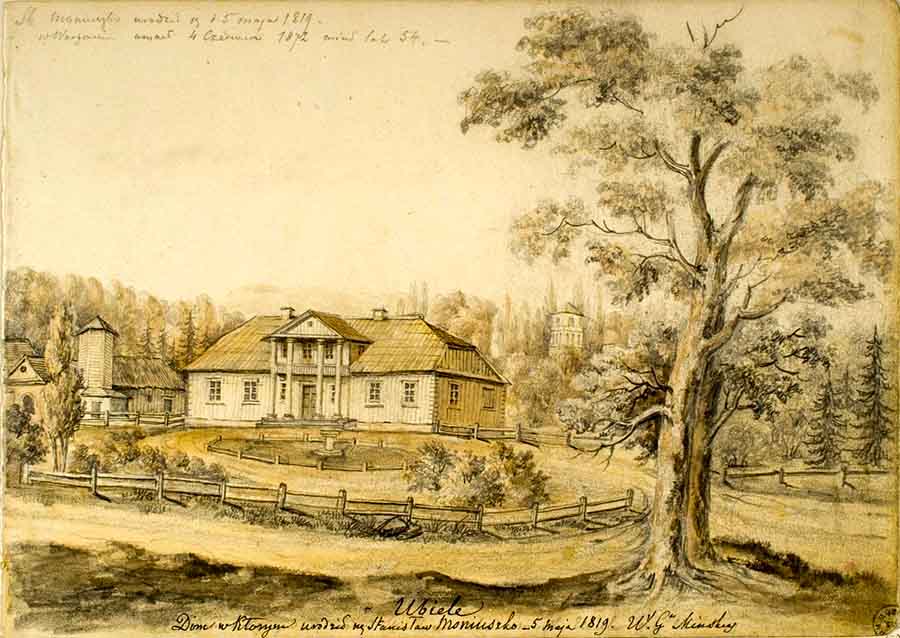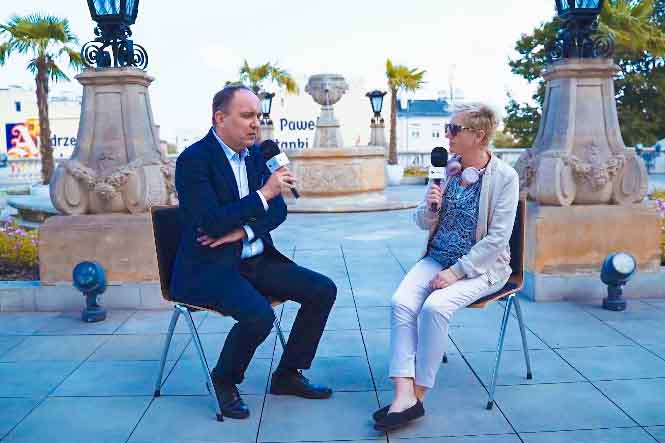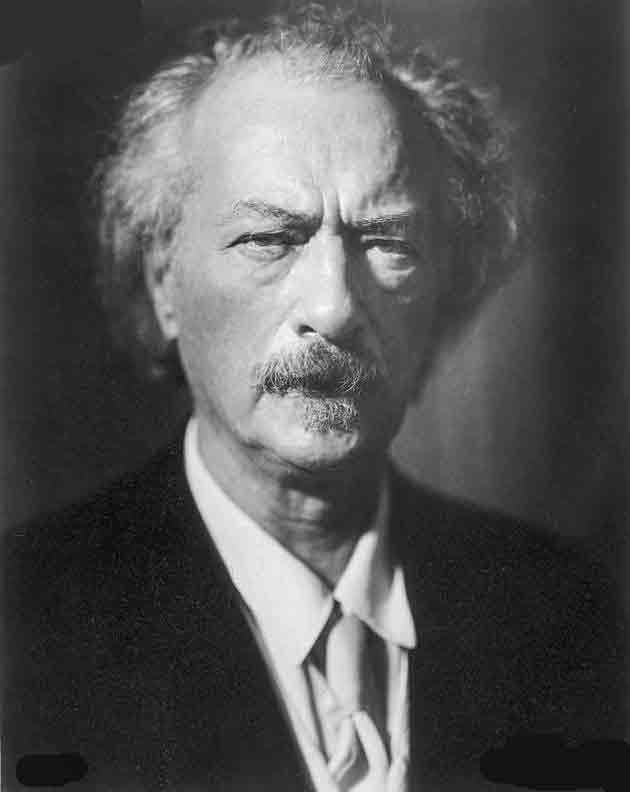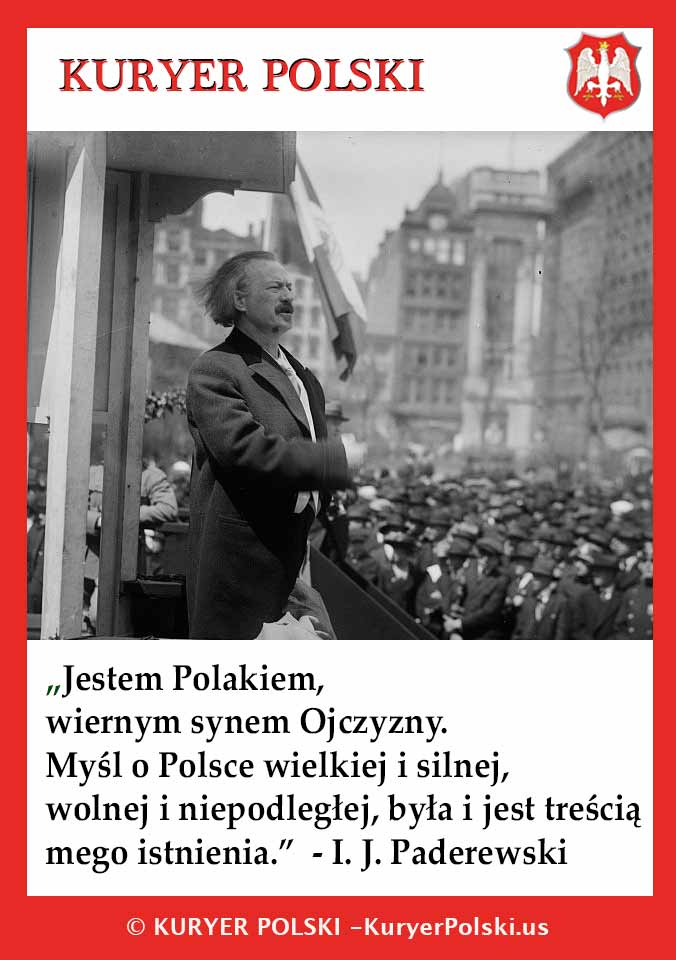206 years ago Stanisław Moniuszko was born, composer, conductor, music teacher; creator of the Polish national opera, author of, among others, "The Haunted Manor" and "Halka" and 268 songs.

Fragment of a portrait of Stanisław Moniuszko by Tytus Maleszewski (Source: Wikipedia)
Stanisław was born on May 5, 1819, in the Ubiel estate near Mińsk Litewski, into a landed gentry family with strong patriotic traditions. His father, Czesław Moniuszko, was a participant in the Napoleonic campaign of 1812 and a talented draftsman – many of his works immortalizing the family and his growing son have survived to this day.
Family
Moniuszko senior also showed literary aspirations. He not only kept a family chronicle, but also wrote a poem entitled "The Year 1812", a verse story about Napoleon's campaign. Stanisław's mother, Elżbieta née Madżarskie, is said to have played the clavichord and sang beautifully.
Education
Moniuszko Jr. himself took his first steps in musical education at home, where his mother taught him to play the piano. When he was 8, the family moved to Warsaw, where the young man had better opportunities to receive further education. He learned to play with the organist Augustyn Freyer, who worked at the Holy Trinity Church in Warsaw.
Three years later, the musically gifted teenager settled in Minsk, where he played under the supervision of Dominik Stefanowicz, a pianist and conductor.

Ubiel, the family home of Stanisław Moniuszko (Source: Wikipedia)
In 1837 Moniuszko left for Berlin to study music with Carl Friedrich Rungenhagen, from whom he graduated in 1840. He then settled in Vilnius, where he was active as an organist, composer, teacher and organizer of musical life in the city.
In 1858, he moved with his family to Warsaw again, where he took up the position of director and organizer of the opera. At the same time, from 1864, he was a lecturer at the Institute of Music in Warsaw.
The Creator of the National Opera
Stanisław Moniuszko published his first compositions during his stay in Berlin. These included piano compositions, as well as songs, fugues, and stage pieces.
While still in Vilnius, Moniuszko began working on his most famous opera, next to "The Haunted Manor", entitled "Halka". Its first premiere took place in Vilnius in 1848, but the opera itself had only two acts at that time.
Only ten years later, a breakthrough came and "Halka", extended by two acts, had its proper premiere at the Warsaw Opera.
The enthusiastic reception of "Halka" made the composer famous overnight, and the work was performed on stages all over Europe (including in Prague, Moscow, and St. Petersburg).
A few months after the Warsaw premiere of "Halka", Moniuszko went on a trip to Prague, Germany and Paris. On the way, he stopped for a few days in Kraków, where he met Ambroży Grabowski, Józef Kremer and Lucjan Siemieński.
His stay in Kraków, and especially his visit to Wawel, where the composer visited the cathedral and viewed the royal tombs, resulted in the creation of a project for a new, never-finished opera, "Rokiczana", written to a libretto by Józef Korzeniowski.
It was to be a historical opera about King Casimir the Great, who was to appear on stage only once, in the final part of the performance.
In 1865, another piece by Moniuszko with a breakthrough in the history of Polish music premiered in Warsaw – the opera "The Haunted Manor". The patriotic tone of this piece and its popularity caused it to be taken off the bill after only three performances.
Other compositions written during this period include music for Mickiewicz's Crimean Sonnets, piano pieces (polkas, mazurs, polonaises, waltzes, nocturnes), and sacred music: masses, psalms, hymns, and songs.
Private Life
Stanisław met his future wife, Aleksandra Muller, in the 1930s, during his stay in Vilnius. He became engaged to the then 17-year-old girl, but the wedding itself did not take place until 1840, when Moniuszko returned from Berlin. The dowry brought by his wife helped maintain financial stability, because, as the composer himself often mentioned in his letters, the work of a musician and composer was not well-paid. The couple had 10 children.
Death
The composer died suddenly on June 4, 1872 in Warsaw, due to a heart attack. His funeral was attended by 80,000 residents of the capital, which became one of the largest patriotic manifestations of that time. Stanisław Moniuszko was buried in Warsaw's Powązki Cemetery.
Most Important Works
In terms of the number of written works, the songs predominate, of which Moniuszko composed 268 (collected in 12 volumes of Śpiewniki domowy). These include:
- Prząśniczka (The Spinner)
- Krakowiaczek
- Switezianka
- Ojcze z niebios, Boże Panie (Father in heaven, God the Lord)
Operas:
- Halka (1848/1858)
- Hrabina (The Countess) (1859)
- "Verbum nobile" (1861)
- Straszny dwór (The Haunted Manor) (1865)
Vocal Pieces:
- Crimean Sonnets - cantata to the text by Adam Mickiewicz (1867)
- Widma (Ghosts) - cantata to "Part II of Dziady" by Adam Mickiewicz) ca. 1852
- Latin Mass for four voices with organ accompaniment, D flat major (1870)
- Funeral Mass for four voices with organ accompaniment, in G minor (1871)












